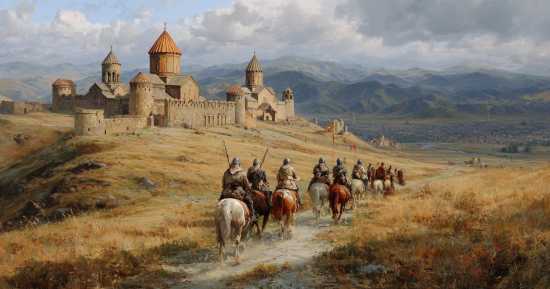
High in the rugged Caucasus mountains, the Armenian History Quiz celebrates a land where tradition, creativity, and community remain beautifully intertwined. Armenia’s culture thrives in lively markets where merchants trade fragrant spices and handcrafted goods passed down for generations. Villages echo with the sounds of folk music, their rhythms carried by instruments unique to the region. Feasts filled with lavash, fresh herbs, and rich stews gather families and friends in joyful celebration. Artisans carve intricate designs into wood and stone, each piece a testament to skill and dedication. In every gesture, taste, and melody, Armenia’s story unfolds with a warmth that is both ancient and alive.
Exploring Armenia is like stepping into a world where history breathes through every custom and craft. Town squares become stages for dance and song, where performers keep age-old traditions vivid and relevant. Markets brim with fruits, cheeses, and honey, each flavor carrying the imprint of Armenia’s landscape. Conversations drift from the art of weaving to the legacy of music, showcasing a deep pride in cultural continuity. From the bustling capital of Yerevan to quiet mountain hamlets, Armenian heritage thrives in every corner. This is a nation that honors its roots through its people, its crafts, and its celebrations of life.
The Armenian History Quiz opens the door to a cultural tapestry woven with resilience, artistry, and hospitality. Every meal tells a story of shared history, every song preserves a cherished memory, and every craft reflects generational mastery. Street festivals unite neighborhoods with dancing, laughter, and the aroma of grilled meats and fresh bread. Painters and musicians draw inspiration from Armenia’s breathtaking landscapes, turning tradition into timeless expression. Armenia’s history is a living celebration, carried forward through creativity, connection, and enduring pride.
7 Fun Facts About Armenian History Quiz
- Armenia is home to one of the oldest winemaking traditions in the world.
- Lavash bread is so central to Armenian culture that it is recognized by UNESCO.
- The duduk, a traditional Armenian instrument, is often described as having a “soulful” voice.
- Armenian carpets are famous for their intricate designs and vibrant colors.
- Yerevan, the capital, is older than Rome and brims with cultural landmarks.
- The country celebrates numerous festivals dedicated to food, music, and the arts each year.
Armenia’s Cultural Landscape
Armenia’s culture thrives in both its cities and villages, where old-world charm and modern creativity merge seamlessly. Yerevan’s vibrant cafés host discussions on literature, art, and music, while rural communities preserve rituals rooted in tradition. Each space reflects the country’s unique character. Markets overflow with handmade rugs, carved woodwork, and pottery painted in warm, earthy tones. These crafts are not only beautiful but carry the wisdom of generations. Every piece reflects heritage that continues to inspire modern artisans.
Language and music remain central to Armenian identity. Folk instruments like the duduk fill the air with soulful melodies, connecting past and present in an unbroken cultural dialogue.
Festivals and Traditions of Armenia
Festivals in Armenia bring color and rhythm to every season. From harvest celebrations to cultural fairs, these events showcase the country’s enduring love for music, dance, and food.Villages host gatherings that highlight local crafts, where artisans demonstrate weaving, carving, and cooking techniques passed down for centuries. These moments preserve the intimate spirit of Armenian heritage.In Yerevan, large festivals feature contemporary art, traditional performances, and bustling food markets. Each celebration honors Armenia’s past while embracing its vibrant, evolving present.
Art, Music, and Cuisine
Music lies at the heart of Armenia’s cultural identity, blending folk traditions with modern interpretations. The haunting sound of the duduk captures the essence of Armenia’s history and soul.Art flourishes in galleries, public murals, and rural workshops. From intricate rug patterns to modern paintings, Armenian creativity reflects a deep respect for both heritage and innovation.
7 Serious Facts About Armenian History Quiz
- Armenia has a rich tradition of folk music and dance that continues to thrive today.
- The country’s cuisine reflects centuries of agricultural expertise and cultural blending.
- Yerevan serves as a cultural hub with theaters, galleries, and historic architecture.
- Rug weaving in Armenia is a centuries-old craft passed down through families.
- The duduk is considered a cultural symbol and is celebrated globally for its unique sound.
- Armenian festivals play a crucial role in preserving community bonds and traditional skills.
- Handcrafted goods from Armenia are prized for their quality and historical significance.
Armenian History – FAQ
Armenian history has influenced global culture through its architecture, cuisine, music, and literature, with notable figures like William Saroyan and organizations like the Armenian Apostolic Church leaving a lasting impact.
